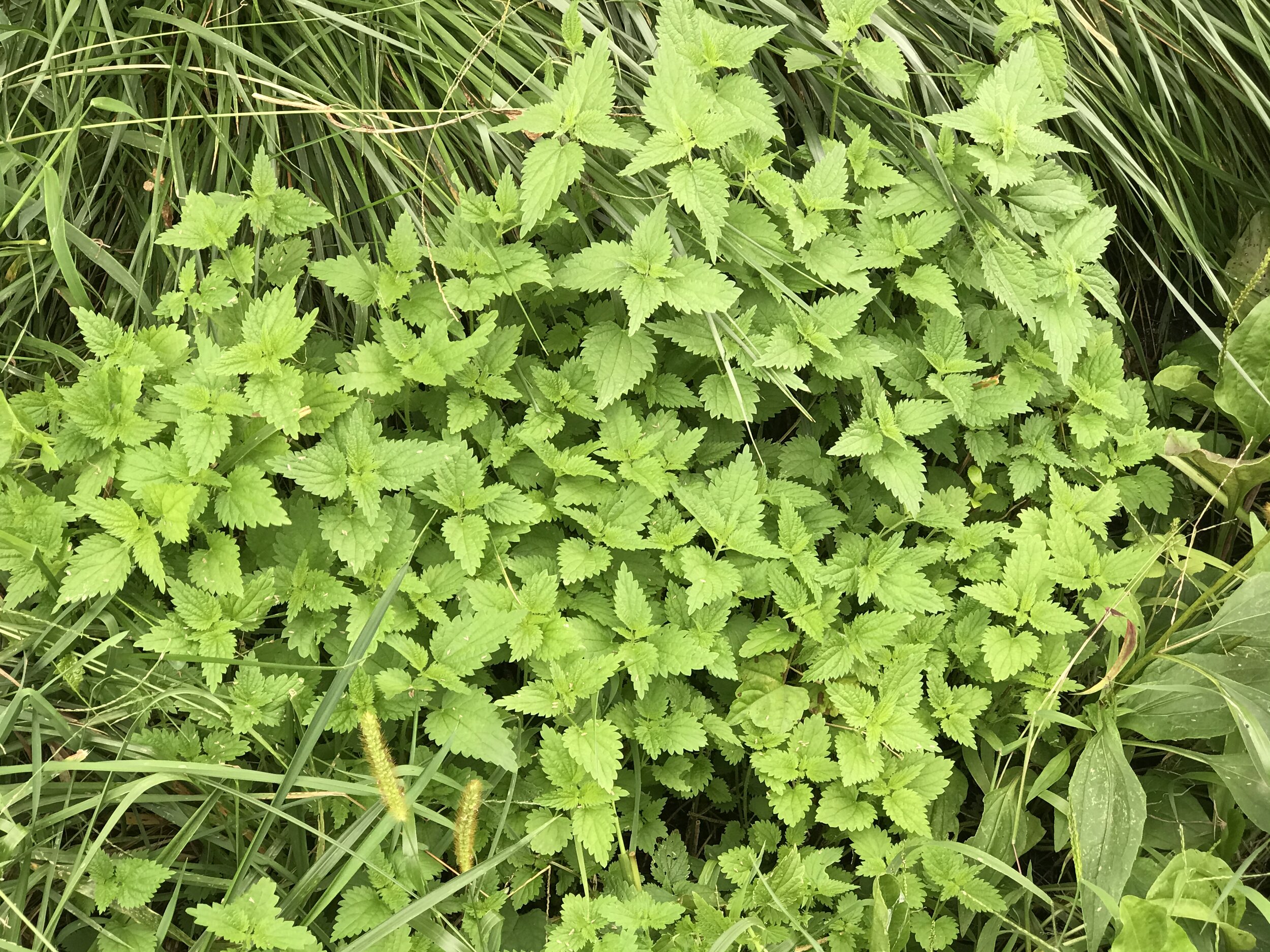
Stinging Nettles- Urtica Dioica
If you were stuck in the dessert and the gods granted you one food item, I would recommend Stinging nettles. Stinging nettles is the one herb that has all your vitamins and minerals that would keep you alive if all of the food in existences suddenly disappeared.
What Makes Stinging Nettles Stand Out
The first time that I took nettles was as an infusion tea. I took the tea for weeks and one day stopped cold turkey. Few days later, my allergies kicked in: stuffy runny nose, watery eyes, constant coughing & sneezing, nauseous headaches. 3 tissue boxes later, I realized this sudden case of “Allergies with a Vengeance” was due to a sudden diet change: My NETTLE INFUSION TEA! I took a large cup of that tea and like magic, my allergies was gone! Since then I take my nettle infusion tea weeks before allergy season.
This summer, I tried something different. I took a bunch of stinging nettles and made the following herbal foods: Stinging Nettle Pesto and Stinging Nettle Soup. I won’t lie, my parents loved them! My dad uses my nettle pesto fo his baked meat and fish dinners. My mom could not stop loving my nettle soup. Plus, her blood test came back with increased red blood cell levels, relieving her anemic symptoms. Also, I used fresh nettles to make delicious Nettle Burger Patties.
One peculiar feature of this herbs is its physical feature. Its body is surround by tiny hypodermic needles that when touched, hurts like the Dickens! Hence the name Stinging needles. So handle this herb with gloves. On the flip side, these needles are wonderful for easing pain. I cannot tell you the number of times this herb aided me in alleviating my pain.
Like Kim Possible, Stinging Nettles can do anything!
Monograph
Botanical Name: Urtica Diocia
Common Name: Stinging nettle
Family Name: Urticaceae
Plant Parts Used: Leaves, aerial parts, root
Constitution: Cold and dry
Taste: Salty
Key Actions: Alterative, antiallergenic, reduces prostate enlargement, diuretic, astringent, tonic, hemostatic, galactagogue, expectorant, nutritive, rubefacient
Plant Preparations: Infusion, tincture, decoction, ointment, shampoo, capsule, soup
Cautionary Pearls: When the leaves are lightly touched will sting and cause mild to severe nettle rash. Gloves are advised when picking. Treat the rash by rubbing the freshly bruised leaves of yellow dock or plantain over the affected area.
Self-Help Uses: Allergic rhinitis including hay fever, anemia due to heavy menstrual bleeding, bites & stings, diaper rash, mild asthma, nettle rash, nosebleeds, hair shampoos and rinses, vegetable or soup, arthritis
Related Species: Urtica urens is used in similar ways to U. dioica. Roman nettle (U. pilulifera) was used by the Romans for urtication (beating with nettles to encourage blood to the surface), which they did to keep themselves warm.
References (Books/Author/Page)-
- The Encyclopedia of Herbal Medicine/Andrew Chevallier /Pg. 146
- The Way of Herbs/Michael Tierra/Pg. 166-167
- The Complete Illustrated Holistic Herbal/David Hoffman/Pg. 158
Pertinent Information
Nettles strengthen and supports the whole body. Nettles has a wide range of uses: the fresh, chopped leaves as a bandage for septic wounds, the juice for nose bleeds, the cooked leaves mixed with myrrh to stimulate menstruation.
Nettle is also used for hay fever, arthritis, and for skin conditions. It is an excellent remedy for anemia- the vitamin C content ensures that the iron it contains is properly absorbed. Aerial parts are eaten as a tonic vegetable and used to make medicinal preparations.
As an alterative, nettle is a cleansing, detoxifying herb. Its diuretic action is due to its flavonoids and high potassium content. This increases urine production and elimination of waste products. In fact, its diuretic action helps in many skin conditions and arthritic problems. This herb is beneficial in cases of childhood eczema especially nervous eczema.
The young nettle leaves can be steamed as a potherb. It is invaluable as a food, rich in vitamins and minerals, and as a medicine. The blood-invigorating properties of stinging nettles make them appropriate for girls at puberty and women at menopause.
As an antiallergenic, nettle treats hay fever, asthma, asthma, itchy skin conditions, and insect bites. The juice is used to treat nettle stings.
To help alleviate painful areas such as arthritis, one has to sting oneself with deliberately over the affected area with freshly picked nettle leaves.
Externally, nettle tea or juice is applied to the scalp to help stimulate hair growth. Plus, a nettle rinse can eliminate dandruff.
More Information
History & Folklore: Stinging nettles has long been appreciated for its medicinal uses. In the 1st century AD, the reek physician, Dioscorides listed a range of its uses- the fresh, chopped leaves as a bandage for septic wounds, the juice for nosebleeds, and the cooked leaves mixed with myrrh to stimulate menstruation.
Research: German research showed that stinging nettles have a marked anti-inflammatory action. People with arthritis taking 50g of the herb a day reported a significant improvement of their symptoms. Also, U.S., Japan, and Germany research established stinging nettles’ value as a medicine for prostates hypertrophy.
Check out my Nettle Burger Patty recipe in my E-Book! You will not regret it.




